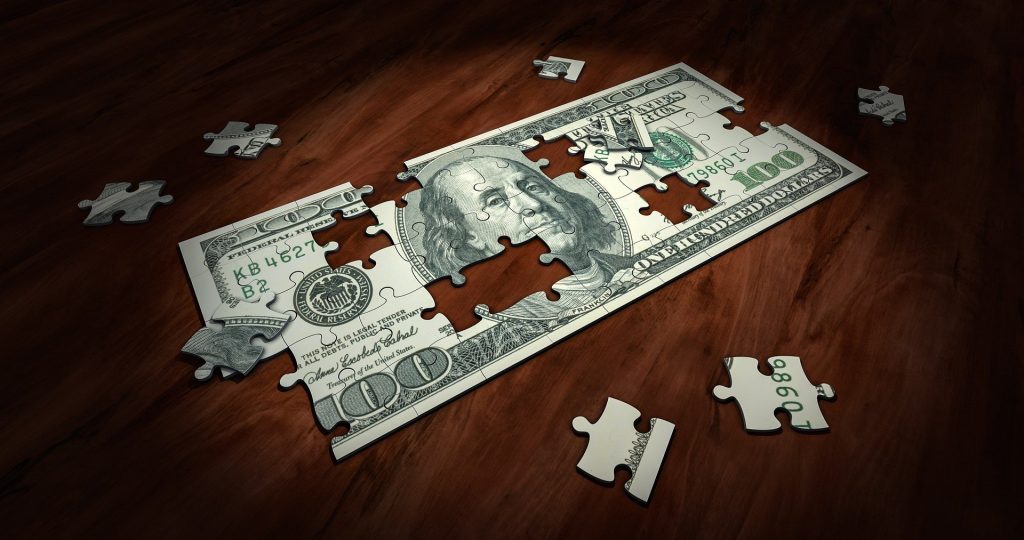Live simply, love generously, care deeply, speak kindly, leave the rest to God.
—Ronald Reagan
Inflating isn’t always as easy as it looks. Sure, as former Federal Reserve chief Ben Bernanke pointed out, a determined government can always do it.
But not necessarily when and how it wants. Even the best-planned robbery sometimes spins out of control. The victim fights back. The getaway car makes a wrong turn. The cops show up…
Lesser of two evils
Rudolf von Havenstein had been president of the Prussian State Bank. Rigid as steel. Hard as rock. History hath no record of a public servant more strict with himself or the nation’s money.
Yet, faced with the threat of the Bolshevik Revolution…and with no way to refinance Germany’s government debt…he made his choice. By 1923, Germany had marks up the wazoo. Every one of them bore his signature.
Germany’s inflation rate in 1914 was under 2%. But, in the emergency of war, the government did what the U.S. did in 1971 — it cut the link between the mark and gold.
By the time Hartley ‘Hot Lips’ Edwards played taps, on November 11, 1919, marking the end of the war, there were four times as many paper marks in circulation. Prices had more than doubled. But there was no hint of the monetary disaster to come.
The authorities had financed the war by printing money. Now, they figured they could print their way out of the post-war depression…
Crushing weight of debt and inflation
The decision seemed like the right one at the time. It prevented an immediate crisis — with mass unemployment and political upheaval.
Von Havenstein knew it would cause inflation, but he considered it the lesser of two evils. He also seemed to think that the inflation would be moderate…as it had been during the war…and that it would reduce the crushing weight of Germany’s war debt.
One little step led to another. And five years later, when von Havenstein died, the central bank of Germany had printed some 500 quintillion marks. This hyperinflation of the money supply caused a hyper deflation in the value of the mark. One U.S. dollar was worth 4.2 trillion marks by December 1923.
Yet for all the ‘money’ held by Germans, they were destitute. The economy had caved in. Violent mobs were out in the streets. A decade later, the Nazis rose to power, the Reichstag burned, and 60 million died in WWII.
But who could have seen that coming?
And who could have foreseen what would happen in America after the U.S. took gold out of its money system in 1971?
1971 switcheroo
Over the past few days, we’ve been exploring the 1970s. The switcheroo in 1971, from old money backed by gold to new money backed only by the promises and integrity of the Fed, was done to solve a problem.
The feds had gotten themselves into a jam. They had spent too much money.
Many of the dollars they spent showed up in Vietnamese banks, relics of the glory days of France’s Indochina colonial empire. From there, the greenbacks made their way to Paris, where they were traded for francs at the Bank of France.
From the Bank of France, they had tickets to Washington, where they were destined for the ‘gold window’ at the Treasury. For every 35 of them the French turned in, they would receive one ounce of gold. This was the way it always had been. It was the way that had worked well for 179 years.
But it meant that a lot of U.S. gold would be surrendered to the French and other foreigners. Rather than allow that to happen, the Nixon administration, aided and abetted by Nobel Prize-winning economist Milton Friedman, closed the gold window.
Henceforth, the French could go fish. All they could get from the Treasury was more pieces of paper, more dollars. So why bother? They would simply hold dollars as their reserve currency, making gold unnecessary.
The effect of swapping out old dollars for new ones was felt fairly quickly. Consumer prices in America rose at a 5% rate at the beginning of the decade. By the end of it, prices had doubled and were still going up at a nearly 14% annual rate.
Great American misadventure with inflation
That, of course, was just the beginning.
America’s great misadventure with inflation didn’t get underway until 1971. Ten years later, most American businessmen, economists, and politicians favored a continuation of the inflation program. And it took a remarkably determined, strong-willed, and clear-headed Fed chief — another Prussian, Paul Adolph Volcker — to defy them.
Had he not prevailed…or not had the backing of President Ronald Reagan…the experiment would probably be over by now. Inflation rates probably would have continued to rise. The economy probably would have continued to soften. Stagflation — with rising prices in a slumping economy — would have gotten worse.
Most likely, the ongoing economic crisis would have set off a political crisis…and in the ensuing blowup, the paper dollar system would have been abandoned.
But success often brings a greater punishment than failure. By 1923, Germany’s experiment with inflation was over, after only nine years. Thanks largely to Volcker’s success at saving the fake-money system, ours continues.
Only God foresees what calamities it will bring; but we will make some guesses. Stay tuned…
Regards,
Bill Bonner
